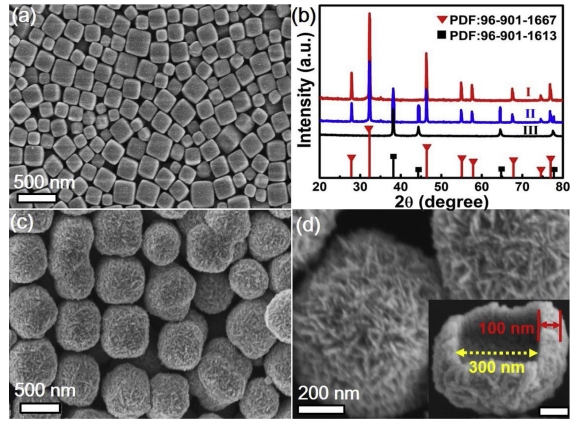Your current location:
- Home>
- Achievements>
- Research Papers
4-Mercaptophenylboronic acid modified Au nanosheets-built hollow sub-microcubes for active capture and ultrasensitive SERS-based detection of hexachlorocyclohexane pesticides
Author: Zhou Xia,Zhao Qian,Liu Guangqiang,Cai Weiping
Periodical: SENSORS AND ACTUATORS B-CHEMICAL
Page: ¾í: 293 Ò³: 63-70
Full text link: https://www.sciencedirect.com/science/article/pii/S0925400519306872?via%3Dihub

Periodical: SENSORS AND ACTUATORS B-CHEMICAL
Page: ¾í: 293 Ò³: 63-70
Full text link: https://www.sciencedirect.com/science/article/pii/S0925400519306872?via%3Dihub

Active capture and ultrasensitive SERS-based detection of hexachlorocyclohexane (HCH) has been a challenging task. A novel strategy based on 4-mercaptophenylboronic acid (4-MPBA) surface modification on Au nanosheets-built hollow sub-microcubes (ANHCs) was proposed to capture HCH pesticides effectively via Suzuki cross coupling reaction. The ANHCs structure composed of numerous intertwined nanosheets was firstly prepared by Au nanocrystals heteroepitaxial growth on AgCl cubes. Then, the 4-MPBA molecules were selected to modify on the surface of ANHCs for SERS-based detection of HCH. The SERS results proved that active capture and ultrasensitive detection of HCH could be implemented, and the limit of detection is 0.3 ppb. Besides, 4-MPBA modified substrate show high reproducibility and sensitivity than unmodified one. Moreover, the characteristic peak intensity ratio I-HCH/I-4(-MPBA) presents a good linear relationship with the logarithm of a certain concentrations, and achieve SERS-based quantitative detection of HCH. In addition, this strategy has been successfully used for the detection and differentiation of mixed HCH isomers in water samples. The surface modification strategy on high performance SERS substrate provides a good route for the highly ultrasensitive detection and active capture of HCH, and paves a way for the detection of organochlorine pesticide residues in water samples.
Previous: Ultrathin and Isotropic Metal Sulfide Wrapping on Plasmonic Metal Nanoparticles for Surface Enhanced Ram Scattering-Based Detection of Trace Heavy-Metal Ions.
Next: Fabrication of Ag-nanosheets-built micro/nanostructured arrays via in situ conversion on Cu2O-coated Si nanocone platform and their highly structurally-enhanced SERS effect
Next: Fabrication of Ag-nanosheets-built micro/nanostructured arrays via in situ conversion on Cu2O-coated Si nanocone platform and their highly structurally-enhanced SERS effect
